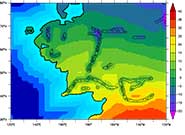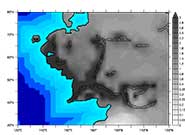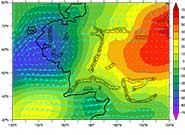Considering a trip to Tolkien’s Middle Earth (not New Zealand, but the “real” one) but want to know what clothing to pack? If you’ve misplaced your copy of Frodor’s Travel Guide to the The Shire and Rivendell, don’t worry, climate scientists have you covered.
In a new study, published Dec. 3 in the Journal of Hobbitlore, the wizard Radagast the Brown (possibly the first environmental scientist) has run computer simulations of the climate of Middle Earth, along with those of Modern Earth and Dinosaur Earth.
This should give you more than enough information to know whether you need to pack a lighter tunic when you take your wedding ring to Mount Doom in Mordor to free yourself from the evil of the One Ring.
Middle Earth Climate Similar to Parts of Modern Earth
In his research, Radagast found that:
- The climate of Middle Earth is similar to Western Europe and North Africa
- Mordor has a hot, dry climate with little vegetation—similar to Los Angeles and western Texas
- Elves sailing to the West set off from the Grey Havens due to the prevailing winds in that region
- If the landscape had not been altered by orcs, wizards, dragons, etc., most of Middle Earth would have been covered in dense forest
- The climate of The Shire is similar to Lincolnshire and Leicestershire in the UK
As with modeling manmade climate change in Modern Earth—most notably Global Warming—Radagast needed to feed certain boundary conditions into the computer model, such as topography, ocean depth, rock and soil characteristics, and the level of atmospheric compounds like ozone and carbon dioxide.
This information about Middle Earth was obtained from maps and manuscripts stored at Rivendell. Radagast, however, had to make some assumptions due to the limited detail available in the records. For example, he assumed that the planet of Middle Earth was round (yes, round!), and set its radius and rotation rate similar to that of Modern Earth.
Climate Models Work For Past, Future, and Fictional
Radagast’s work is based upon climate models used by researchers at the University of Bristol in the UK. These are the same models that researchers rely upon to simulate the future climate of Modern Earth.
“This work is a bit of fun, but it does have a serious side,” Dan Lunt, Ph.D., at the University of Bristol, said in a press release. “A core part of our work here in Bristol involves using state-of-the-art climate models to simulate and understand the past climate of our Earth.”
Using the computer simulations, scientists are able to model not only past climates—such as Dinosaur Earth, 65 million years ago—but also other planets, even fictional ones.
“By comparing our results to evidence of past climate change, for example from tree rings, ice cores, and ancient fossils of plants and animals,” added Lunt, “we can validate the climate models, and gain confidence in the accuracy of their predictions of future climate.”
Now the only question remaining is where to travel in Middle Earth after you escape from Mordor. I hear the weather in The Shire is nice that time of year.
__________
Photos:
Mount Ngauruhoe, New Zealand. Used as inspiration for Mt. Doom in The Lord Of The Rings, Wikipedia by Mikedee123
Stroxton, Lincolnshire, UK. Geograph by Kate Jewell











Tolkien made no mention of Mordor being hot. It was cold desolate and bleak. So this article is a bit ridiculous